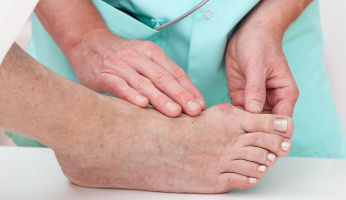Walking Exercise: Walking Workouts You Can Do Anywhere
 Walking Exercise: Walking Workouts You Can Do Anywhere www.walkjogrun.net
Walking Exercise: Walking Workouts You Can Do Anywhere www.walkjogrun.net When you decide to do cardiovascular exercise, some people may think you have to go for a run, play tennis, or jump on a bike. But, going for a brisk walk is just as good as any other cardiovascular exercise.
You can include stairs into your walking routine, switch up your walking route, and ask a friend to join you to make walking more interesting.
If you are not very active, you should ease into your new walking routine and start by walking 10-minutes per day, around 4 days a week.
Is walking a good exercise?
Walking is one of the most straightforward exercises that you can do. All you need are a pair of comfortable, supportive walking shoes and a little time.
Walking helps with many aspects of your health also, such as:
- Strengthens your heart
- Strengthens your bones
- Boost your mood
- Lowers your blood sugars
- Maintains weight
- You will sleep better
- Lowers cholesterol
When you go walking, you want to walk at a pace of 3 miles per hour and at least 10 minutes per day. Your walking routine should add to your 150 minutes of weekly exercise. A moderate walk is when you are breathless, but you can still carry on a conversation.
Be sure to do a 5-minute warmup and a 10 minute cool down. If you are going for a long walk, you will want to make sure you have water and a snack to help keep you fueled and hydrated.
1. Simple walking exercise routine
Some simple walking exercise routines that you can do to shake things up a bit are:
- Take a new walking route – take a walk by the river, through the city or town, hike through the forest.
- Include a stairs or steps routine – walk the stairs or steps for a set number of times as your walking exercise or include a set of stairs or steps in your walking route.
- Includie hand weights – if you are walking on a track or at home, try doing short arm exercise after each lap.
- Doing fartlek (HIIT workouts) – walk at an increased pace for 3 minutes and a slower pace for 2 minutes, and then repeat. Do this routine for at least 10 minutes.
When using arm weights, if you decide to walk with the weights, make sure you are not carrying the weights for your entire walk or long periods because this could lead to injuries related to overuse.
Also, it is important that you do not use ankle weights because they can cause muscle imbalance and make you use your quadriceps and not your hamstrings while walking.
2. Treadmill walking workout
Walking on the treadmill has its benefits, just the same as walking outside. The treadmill gives you the advantage of changing your incline as you please. You can also increase and decrease your speed more efficiently.
Depending on your fitness goals, you can:
1. Intensify your treadmill workout to burn more calories by increasing your walking speed to around 3.5 to 4 mph.
2. Tone your legs and buttocks by increasing the elevation on the treadmill, i.e., walk for 3 minutes at a 1% incline and then 2 minutes at a 6% incline. Repeat this cycle 2 to 3 times. For more intensity, increase the incline each cycle.
3. Try doing the above fartlek workout on the treadmill. Walk at a vigorous workout pace for 3 minutes (you should be out of breath and unable to talk) and walk at a low-intensity pace for 2 minutes (you should be able to hold a normal conversation and not be out of breath), and then repeat. Do this routine for at least 10 minutes.
In the end, walking indoors or outdoors is good for your health. And outside of controlling your incline and speed at a fingers touch, your body will thank you either way.
3. Extra exercises to do while walking
Here are some extra exercises you can do while you are on your walk:
- Mediation – tune out the world around you and:
- Focus on the in and out rhythm of your breath
- Become one with the nature around you
- Let the harmony of your music take you.
- Fitness trails – these are a great way to combine walking and strength training. You can easily search for one near you in your local parks or recreation websites.
Aerobic considerations for walking
If you are starting or restarting your fitness journey, do not try to jump straight to a vigorous walk (you cannot talk and are out of breath). It would be best if you ease your way into your walking routine.
Start small at a 10-minute moderate walk (you should be able to hold a conversation and be a little breathless) 4 times a week and build yourself up to 30 minutes.
If you have:
- Joint issues – check to see if your local pool offers classes. The water can help ease the impact on your joints and strengthen your muscles.
- Diabetes-related nerve damage – check with your Primary Care Provider (PCP) or Podiatrist to see what aerobic exercises are best for you.
- Heart disease – your PCP may suggest that you do monitored exercise in a cardiac rehab setting before starting a walking routine.
- A pregnancy – walking is not an issue as long as you were active prior to your pregnancy. But, be aware that your center of gravity changes as your belly grows. So, avoid uneven terrain to prevent falling.
Take away
Walking is a great and easily accessible exercise that many people can enjoy. Remember to warm up, cool down, and stay hydrated!
Sources
- , Lose Weight, Tone Up and Get Fit With Treadmill Walking Workouts, Lifestyle Website
- , Walking for health, Health Website
- , 8 Ways to Shake Up Your Walking Routine, Health Website
- , Walking, Health Website















